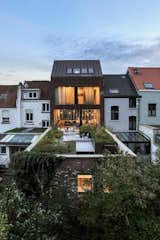Located on New Zealand’s North Island along the Coromandel Peninsula, this timber-clad shipping container house by Crosson Clarke Carnachan Architects captures the simplicity of living with nature. An open-plan layout extends the interior toward the surrounding landscape and ocean, while a built-in mechanism reveals a drop-down deck on one side of the unique holiday home.
To achieve a path to homeownership without leaving the city or breaking the bank, three families in the sustainable design industry pooled resources to fashion an arrangement of three solar-powered, net-neutral-energy townhouses in place of a dilapidated 1970s single-family home in Brunswick, Australia.










